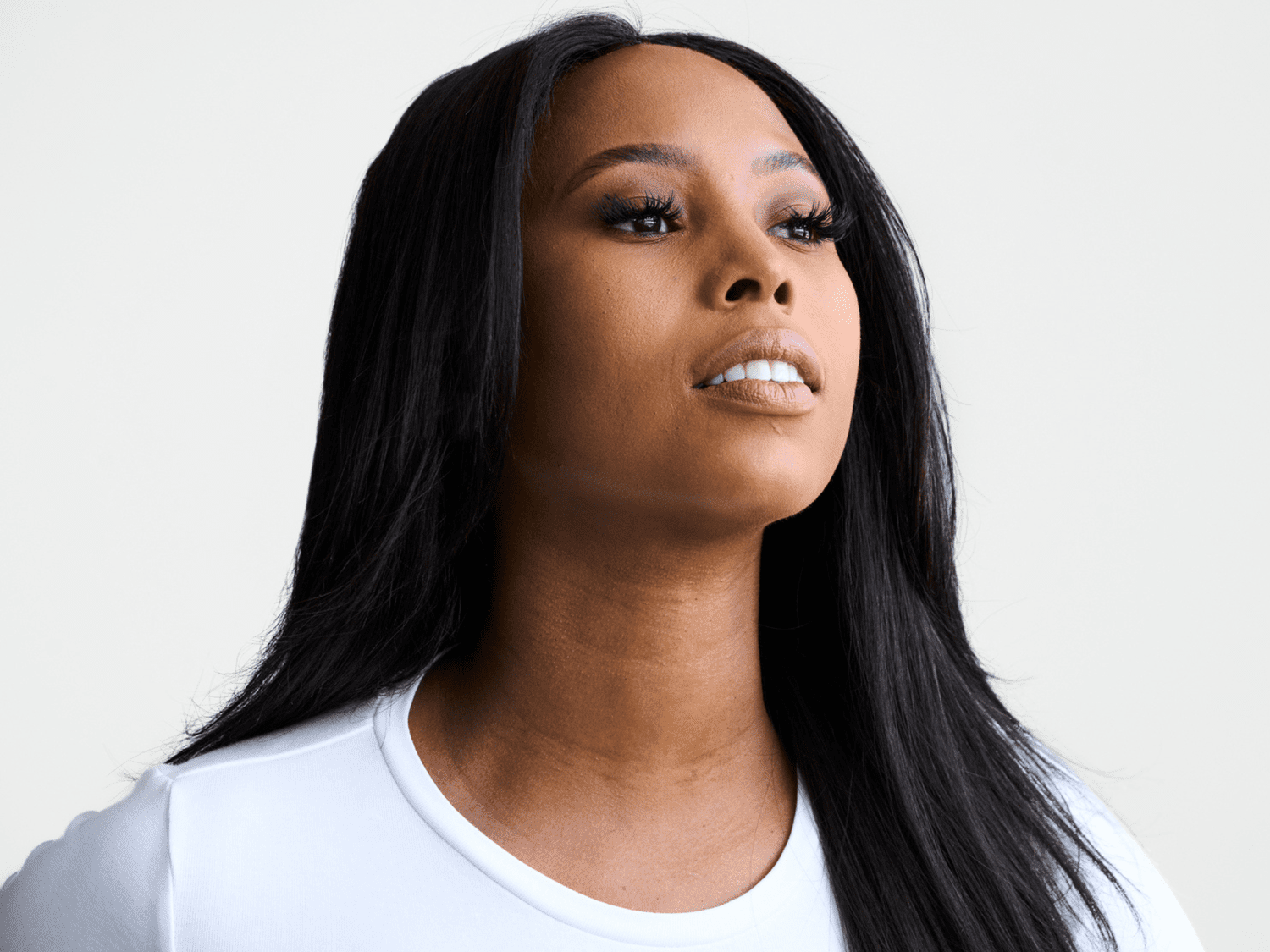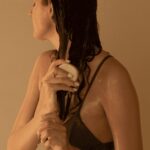Close 
Stocksy
Relaxed hair, by its definition, undergoes controlled damage in order to straighten it. So let’s get this out of the way: Your hair is going to be damaged at least slightly anyway, as long as you’re relaxing it. However, maintaining straight hair in a healthy fashion and achieving your growth goals are possible if you follow several simple steps. If you’re not currently following most of these tips, your hair probably isn’t as healthy as it could be. It goes without saying that all hair should be pampered, but unfortunately, relaxed manes require even more special treatment because they’ve been processed so heavily.
Keep reading for five expert tips to keep relaxed hair looking and feeling its best.
Meet the Experts
- Takisha Sturdivant-Drew is a celebrity hairstylist with clients like Kerry Washington, Tessa Thompson, and Ariana DeBose.
- Leigh Hardges is a hairstylist and natural hair expert.
Can Relaxed Hair Still Be Healthy?
Relaxed hair can be healthy if you adjust your routine to account for the damage done during the process. According to hairstylist Leigh Hardges, those with relaxed hair should “refrain from heat styling, opt for salon-quality treatments, use semi-permanent color only, and invest in quality products with a regular regimen.”
01 of 05
See a Professional for Chemical Applications
This is typically where you'll spend the most money in maintaining relaxed hair, but it's worth investing in a trusted stylist for touch-ups and/or coloring. "Only get relaxers from a licensed and experienced professional," Hardges advises. This may not be easy; you might even have to try several salons and get recommendations before you find someone you're happy with, but it's worth the extra effort.
Once you find a professional and build a good relationship with them, they should be able to advise you as to whether a lye or no-lye relaxer is the best option for you, which cuts will work for your lifestyle, and how to care for your hair daily.
According to celebrity hairstylist Takisha Sturdivant-Drew, applying relaxers to previously processed hair, leaving chemicals on for too long, and getting your hair processed too often are some of the most common mistakes made when it comes to relaxing. This is just another reason why relaxers should be left to professionals. Not only can this help to mitigate risks that can come from DIY attempts, but creating a relationship with a good hairstylist can help to keep your hair healthy in every aspect. Plus, in the long run, it'll ultimately save you money because you won’t need as many treatments to rehabilitate your hair and bring it back to health.
Byrdie Tip
To try to help combat overprocessed hair, use a protein treatment, followed by an intensely moisturizing conditioner.
02 of 05
Choose Low or No-Heat Styling
Both our experts agree that keeping heat styling to a minimum is key to keeping relaxed hair healthy. Sure, heat tools are fine for occasional use, but try to get into the habit of low or no-heat styling when you can. Some examples of styling techniques that don’t require a lot of heat include: wet sets, wrapping, satin-covered rollers, curlformers, and flexi-rods.
Protective hairdos keep your hair’s ends up and out of sight, which may allow them to retain moisture, which in turn may lead to healthier hair. Even if your goal is not to grow hair down your back, well-moisturized ends are still important. This isn’t to say that your mane always needs to be up and out of sight, but if you start to notice that your ends seem drier and/or are looking worse for wear, then incorporate more protective styles into your regular looks. When choosing a protective style, Sturdivant-Drew recommends looking for a low-tension option like two-strand twists or braided ponytails.
03 of 05
Wrap and Protect at Night
Not only does wrapping your hair at night save you time in the morning, but it also protects your delicate tresses while sleeping, especially if you add in an extra layer of protection like a silk pillowcase or hair cover. Wrap your hair into a doobie with a brush or comb, molding your hair to the shape of your head. This preserves body and volume in a low-maintenance fashion requiring no heat. You also won’t need to “bump” your ends with a curling or flat iron, so this heatless setting method is gentle on the most delicate part of your hair.
04 of 05
Condition Regularly
Relaxers may strip away a lot of the hair's natural oils during straightening, so replacing that moisture is highly recommended. Instead of using greasy, petrolatum-laden products that don't actually moisturize the hair but only coat it, rely on good-quality conditioners and moisturizers to maintain proper moisture levels for your hair follicle.
Sturdivant-Drew recommends applying a deep conditioner with heat for 15 minutes, rinsing, and following up with a hydrating leave-in. “I love Smooth Moisture’s Leave In Conditioner because it moisturizes the hair, leaving it extra smooth and shiny.”
05 of 05
Trim as Needed
"Trim every eight to 10 weeks," says Sturdivant-Drew. If not properly cared for, the ends of hair may become excessively dry. They're the oldest and most fragile parts of hair, and they need to be treated with extreme care.
However, they’re not going to last forever, so it’s better to get rid of split and dry ends sooner rather than later. The longer you keep them, the more your split ends may travel—all the way up to the hair follicle. If you routinely pamper your hair and observe other good practices, you’ll need to trim less often than someone who flat irons daily or never deep conditions.
FAQ
- How long does relaxed hair last?
The length of time that relaxed hair lasts will vary from person to person. "It depends on the hair type. I have coarse hair, so for me, it lasts about eight to 10 weeks. If you have finer hair, it will last a few months," says Sturdivant-Drew.
- What are the disadvantages of relaxed hair?
There are a few disadvantages of relaxing your hair. Namely, "[Relaxers] compromise the integrity of the hair tremendously," says Hardges. "The results are permanent. The maintenance is costly and requires a strict schedule for best results. Not to mention, relaxers have been connected to fibroids, endometriosis, infertility, and certain cancers." A 2022 study in the Journal of the National Cancer Institute confirms this finding, noting that the use of chemical relaxers has an increased risk of hormone-related cancer.
Article Sources Byrdie takes every opportunity to use high-quality sources, including peer-reviewed studies, to support the facts within our articles. Read our editorial guidelines to learn more about how we keep our content accurate, reliable and trustworthy.
-
Llanos AAM, McDonald JA, Teteh DK, Bethea TN. Chemical relaxers and hair-straightening products: potential targets for hormone-related cancer prevention and control. J Natl Cancer Inst. 2022;114(12):1567-1569.


